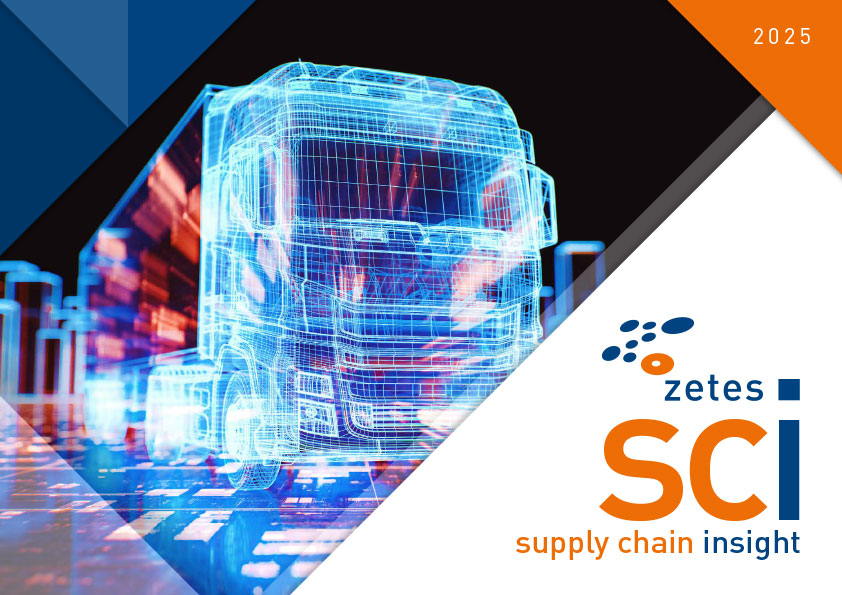Interview with Marc VUKOVIC, Business Development Manager - Transport Processes - at Zetes. Conducted on Tuesday 30th May 2023 by Frédéric Legras, Director of the Logistics FAQ Portal for the following project: “Transport: a key factor in the customer experience”
How have expectations evolved with regard to transport operations?
Customer expectations keep growing. In B2C, for several years consumers have been accustomed to receiving fast deliveries with real-time tracking.
Now they expect the same faultless customer experience in their professional environment, regardless of whether they, or the supplier, are paying for delivery. In a word, they want it to go “seamlessly”, meaning without a hitch, without difficulties, and in a fully transparent way for the addressee.

B2C managed to organise itself accordingly, but to reach the same service level standard, B2B had to deploy a major effort. This all takes place in a context of strong pressure on transport costs.
What are the key ingredients to providing a quality customer experience?
The provision of real-time information is now a prerequisite.
Next, for me, reconciling customer experience with profitability means that the company must be able to offer a variety of choices and added-value options.
In particular, these choices concern services (exchanging goods, upstairs delivery, unpacking and removing the boxes, carbon offset, etc.), delivery times (standard, express, etc.), and delivery methods (home delivery, pick-up point, locker, click and collect, on worksites for construction professionals, etc.).
But this can go even further, approaching truly unattended deliveries:
- For example, one company that uses our solutions delivers replacement parts directly into its technicians’ vehicles, which eliminates the need for technicians to return to their depot to pick up equipment before starting their service visits. This was made possible by a third-party application integrated into our ZetesChronos transport digitalisation solution, which lets you open the vehicle, put in the part, and confirm delivery without any need for the user to exit our app.
- Another of our customers delivers packaged meat at night, placing it directly in the refrigerators of the small local shops of a food retailer. It is therefore not necessary for a store employee to be present to receive the goods. Proof of delivery is provided by scanning a barcode and taking pictures.
The various options can have differential pricing, which makes it easier to make customers understand that premium services, such as fast home delivery, generate additional costs compared to pick-up points or lockers, which allow shipments to be grouped.
I think the concept of getting something for free is reaching its limit in terms of social and environmental impacts.
All work has a cost, and it is important to pay a fair price for it. The “Uber model”, with self-employed drivers who work for very limited pay, raises some ethical questions. That model, in fact, is being challenged everywhere, particularly in the USA, where some independent drivers were re-classified as employees.
Finally, once the appropriate pricing and the relevant choices have been established, it is essential to live up to your promises, which means executing the plan efficiently. It's not an easy task, and it requires adopting the right organisation (optimising tasks, eliminating the risk of error, etc.), backed up by tools that facilitate the digitalisation of processes and the automation of real-time exchanges.
How can you make sure customers are happy with the proposed transport experience?
Measuring the impact of transport on the customer experience can obviously involve the use of statistical tools to gauge OTIF (on-time-in-full) achievement and via conducting satisfaction surveys via CRM.
But, in my opinion, repeat orders are still the best indicator.
What impact could the current driver shortage have?
I think it's hard to fully measure the effects for the time being. The biggest wave of retirements is yet to come.
There is some concern, however, that the new mobility package could exacerbate the situation. This European regulation restricts road cabotage, which will make it much more difficult to use foreign carriers for domestic deliveries. It is a relatively recent measure, whose impact has not yet been fully assessed.
Also, unfortunately, the problem is not limited to drivers, since there are similar labour shortages in warehouses (even though the reasons are not necessarily the same).
It's actually the whole middle mile that should be monitored.
How is this middle mile important to customer satisfaction?
It is true that companies have often focused their efforts on the first and last mile of the logistics chain, particularly on shipping from their factory or warehouse and delivery to the final recipient. That is where the shortage of drivers can have a very noticeable effect.
And yet, before reaching the recipient, the goods generally pass through several warehouses and service providers. That is the stage where processes such as grouping, sorting, cross-docking, or even order picking and organisation of rounds (for local storage) come into play. Unfortunately, these middle miles are usually neglected. Non-automated platforms are often used to process large volumes of goods to very tight deadlines, making the risk of error very high.
But a logistics chain is only as strong as its weakest link and, currently, that happens to be the middle mile.
“A logistics chain is only as strong as its weakest link and, currently, that happens to be the middle mile.” Marc Vukovic, Business Development Manager at Zetes
How can you make sure your carriers are aligned with your service quality objectives?
Carriers are expected to provide optimum service quality with rising volumes to be processed, a stricter regulatory framework, and the obligation to invest in greener resources and technologies that help reduce their carbon emissions.
To help them meet those challenges, the users of their services must offer them a real partnership and provide them with clear visibility on the activity that will be entrusted to them in the short and medium term.
When a company is satisfied with its service provider, it is in its best interest to do everything possible to maintain that relationship. Paying a fair price for the service is a big part of that.
How do Zetes solutions help companies make their transport and logistics operations a positive aspect of the customer experience?
We publish a wide range of solutions, particularly operational ones for the warehouse (ZetesMedea) and for transport (ZetesChronos). ZetesChronos, a real-time traceability and proof-of-delivery solution, which can be integrated with a partner's route optimisation module. When combined with an ERP or WMS, it allows the company to do without a TMS.
On a more tactical (ZetesOlympus) or strategic (ZetesZeus) level, we have solutions to measure what's happening in the field and to report data that helps us control our business efficiently and determine the corrective actions to be implemented: in real time or proactively, as part of a continuous improvement approach.
How do your solutions help to contain the impact of team turnover?
Our solutions are designed to reduce training times. The intelligence is contained in the PDA used by the operational personnel. The logistics and transport processes are scripted in there, to guide the operators. This means that any new employee can become operational in half an hour.
That's a very important point, especially with regard to transport. The driver is the final representative of the brand in dealing with the end consumer. The customer must benefit from a flawless experience, whether the delivery is performed by the usual driver or one who was hired to help at busy times or fill in for an absent driver. It is no longer possible to count entirely on experience, but it is important to give our teams the tools that will enable them to guarantee a uniform quality of service.
You have also developed a solution dedicated to the visibility of containers...
Our Asset Tracking solution lets you guide and track container movements, to optimiser container stock and availability. This applies to pallets, of course, as well as containers and tubs. For example, we have customers in the pharmaceutical industry who deliver to dispensaries in plastic tubs (refrigerated or not). If the tubs are reusable, they must be traceable. The cost of losing them can add up to hundreds of thousands of euros a year.
We upload the data to a dedicated platform providing access to the movement histories. It generates automatic alerts if an asset has not been identified in a link of the chain for x days. Beyond the financial aspect, the main aim is to make sure a sufficient number to work with is always available.
The use of this type of solution makes perfect sense at a time when many companies have implemented environmental initiatives and are trying to eliminate boxes in favour of reusable plastic trays or crates. These systems also allow faster shelf stacking.
BIO EXPRESS
Marc Vukovic has worked in the transport sector for more than 20 years. Most notably, he has held operational and sales positions with service providers (Geodis, DB Schenker, UPS) and shippers (Alcatel), so he has dealt with every possible mode of transport. He has worked at Zetes since early 2019, and his mission is to support the ZetesChronos solution.
